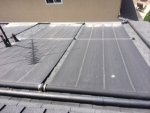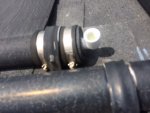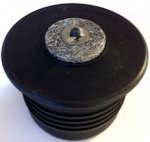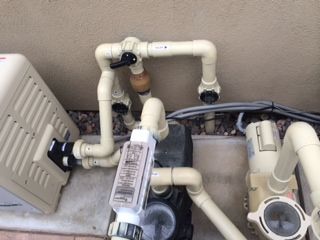Andy714, have you considered replacing the o-ring in the solar valve (valve you turn to send water to roof)? I thinking if this o-ring is bad, your system would suck in air as the water goes up.
I'm having a very similar if not exact same problem. Replaced old 2HP with Pentair VSP. FAFCO Solar. As I start to use solar, getting bubbles thru returns. The amount of bubbles is proportional to the RPM of the VSP. (2200RPM = lots of air, 2300 = less air, 2400RPM and above - champaign bubbles. At 2400RPM PSI is 16. I Replaced VRV. Cleaned DE filter, and also went ahead and replaced o-rings in all my jandy valves. 2 story home (perhaps taller than most with higher ceilings).
I have 2 questions.
1. Do I even have a problem? (I've been told that I should be able to run 2200RPM on my setup and run solar just fine. My goal here is to run at lowest RPM to save electricity).
2. Can someone provide some additional guidance on relocating the VRV. Right now, my (new one) is installed on the highest point on the highest panel (peak of roofline). Is it as simple as relocating the VRV to one of the next lower panels?
Thanks in advance.






